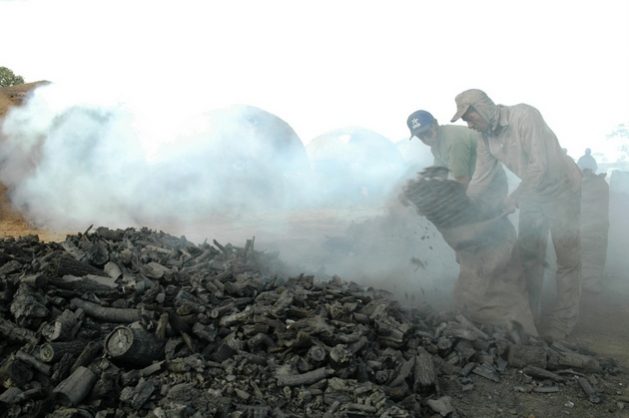Geneva, (Kanaga Raja) – Almost 1.6 billion workers in the informal economy – nearly half of the global workforce – have been significantly impacted by the COVID-19 outbreak and lockdown measures and/or are working in the hardest-hit sectors, the International Labour Organization (ILO) has said. In its latest Monitor on COVID-19 and the World of Work, the ILO said that among informal economy workers significantly impacted by the crisis, women are over-represented in the high-risk sectors: 42 per cent of workers in those sectors are women, compared to 32 per cent of men.
The ILO also said that global working hours in the second quarter of 2020 are expected to be 10.5 per cent lower than in the last pre-crisis quarter (Q4 2019).
This is equivalent to 305 million full-time jobs, representing a significant deterioration on the previous estimate of 195 million for the second quarter, said ILO.
“This has been driven mainly by prolongation and extension of containment measures,” it added.
“As the pandemic and the jobs crisis evolve, the need to protect the most vulnerable becomes even more urgent,” said ILO Director-General Guy Ryder.
“For millions of workers, no income means no food, no security and no future. Millions of businesses around the world are barely breathing. They have no savings or access to credit. These are the real faces of the world of work. If we don’t help them now, they will simply perish,” he warned.
According to the ILO report, since its last edition on 7 April, global COVID-19 infections have more than doubled to reach nearly 2.6 million on 22 April 2020, while the number of deaths has more than tripled, approaching 180,000 worldwide.
Around 68 per cent of the world’s total workforce, including 81 per cent of employers and 66 per cent of own-account workers, are currently living in countries with recommended or required workplace closures.
Nearly all employers and own-account workers in lower-middle-income countries are affected since these are economies with high levels of informality and limited fiscal means and policy space to respond to the needs of such enterprises and own-account workers, said ILO.
The crisis is causing an unprecedented reduction in economic activity and working time, it added.
The estimates of hours lost for the first quarter stood at 4.5 per cent (equivalent to approximately 130 million full-time jobs, assuming a 48-hour working week) compared to the pre-crisis level (the fourth quarter of 2019).
The estimated decline in work activity in the first quarter of 2020 in different regions is uneven, said ILO.
Whereas the number of hours worked in the first quarter of this year declined by 6.5 per cent in Asia and the Pacific (driven by an 11.6 per cent decline in Eastern Asia) compared to the last quarter of 2019, all other major regions saw declines of less than 2 per cent.
This labour market pattern is closely linked to the timing of outbreaks and related social distancing measures across different regions of the world.
Global patterns in hours lost in the first quarter of 2020 are driven in large part by the considerable impact of COVID-19 in China during that period.
The decline in working hours in the second quarter is now expected to be even worse than initially estimated.
Based on estimates from 22 April 2020, global working hours in the second quarter are expected to be 10.5 per cent lower than in the last pre-crisis quarter.
This is equivalent to 305 million full-time jobs, representing a significant increase on its previous estimate of 195 million (or working-hour losses of 6.7 per cent), said ILO.
In addition to new data for the first three weeks of the second quarter becoming available, two main factors have contributed to this significant revision.
First, the prolongation and extension of strict containment measures in many countries where such measures were already implemented caused a cumulative impact on work activity.
Second, additional countries implemented stricter containment measures, including required workplace closures.
From a regional perspective, although the outlook has worsened for all major regional groups, the new estimates indicate that the largest decline is occurring in the Americas and in Europe and Central Asia, said ILO.
In the Americas, the loss of working hours in the second quarter is expected to reach 12.4 per cent compared to the pre-crisis level.
In Europe and Central Asia, the decline is now estimated at 11.8 per cent. The estimates for the rest of the regional groups follow closely, all being above 9.5 per cent.
Across income groups, lower-middle-income countries are likely to register the highest rate of hours lost, at 12.5 per cent, but the impact is comparable across all income groups.
Notably, Eastern Asia is the only region that is expected to see a recovery in working hours in the second quarter of this year.
However, hours worked in the region are projected to remain 7.2 per cent below the corresponding level in the fourth quarter of 2019.
The ILO also pointed out that approximately 47 million employers, representing some 54 per cent of all employers worldwide, operate businesses in the hardest-hit sectors, namely manufacturing, accommodation and food services, wholesale and retail trade, and real estate and business activities.
An additional 389 million own-account workers are engaged in these four sectors. Taking together employers and own-account workers, some 436 million enterprises worldwide are operating and working in the hardest-hit sectors.
More than half of these enterprises – some 232 million of them – are in wholesale and retail trade.
Own-account workers represent 45 per cent of all employment in this sector, while micro firms (between two and nine employees) account for 25 per cent of all workers in it.
A further 111 million enterprises in manufacturing, 51 million in accommodation and food services and 42 million in real estate and other business activities are currently facing an extraordinarily difficult business environment with major impacts on employment opportunities.
Taken together, these four sectors account for more than 30 per cent of GDP on average, said ILO.
“Own-account workers and micro-enterprises together represent around 70 per cent of global employment in retail trade and nearly 60 per cent in the accommodation and food services sector, a reflection of the severe vulnerability of these sectors in the current economic crisis.”
The ILO report found that as of 22 April 2020, close to 1.1 billion informal economy workers live and work in countries in full lockdown, and an additional 304 million in countries in partial lockdown. These workers together represent 67 per cent of informal employment.
The ILO has estimated that almost 1.6 billion informal economy workers, accounting for 76 per cent of informal employment worldwide, are significantly impacted by the lockdown measures and/or working in the hardest-hit sectors.
Almost all of these workers (over 95 per cent) are working in units of fewer than ten workers.
Its estimates also show that earnings for informal workers are expected to decline in the first month of the crisis by 60 per cent globally, 28 per cent in upper-middle-income countries, 82 per cent in lower-middle and low-income countries and 76 per cent in high-income countries.
The ILO called for urgent, targeted and flexible measures to support workers and businesses, particularly smaller enterprises, those in the informal economy and others who are vulnerable.
Published in SUNS #9112 dated 4 May 2020
– Third World Network




